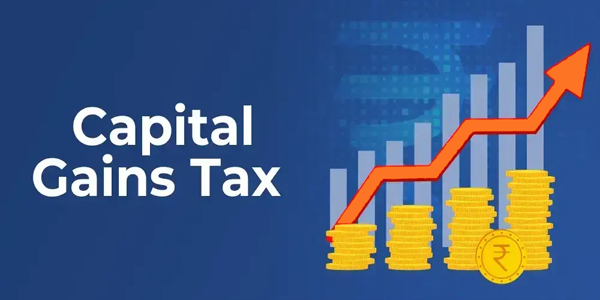
Kamala Harris’ Unrealized Capital Gains Tax
Written by Dr. Everett Piper
There’s a meme going around recently regarding Vice President Kamala Harris’ proposal to impose an “unrealized capital gains” tax on American citizens.
The meme says:
“Your mom purchased her home 40 years ago. She paid $50,000 for it. It’s paid off, which is great because Mom lives on a fixed income. It’s now worth $500,000! Kamala Harris wants her to pay 25% of that gain even though your mom has no plans to sell the home. Now, Mom has to take out a $112,500 loan on the home to pay Kamala’s 25% unearned capital gain.
“With rising inflation, Mom can’t afford that loan on her fixed income, so she loses the home she raised her family in and worked so hard to pay off. But don’t worry. A big corporation will come in and buy her home and rent it back to her. They say you’ll own nothing and be happy. Do you see how they will accomplish that? Drain your savings and tax you out of your home.”
Because Ms. Harris implies her unrealized gains tax would apply only to those with a net worth of $100 million or more, the fact-checkers say this meme’s concerns are fake news. “This is shameless fearmongering,” they cry. Mom isn’t worth $100 million!”
What should our response be?
First, we should ask: “Who are you to say our concern is fake? Why is it fake to suggest that if Ms. Harris successfully codifies this tax into law, she will likely move the target? What’s so magic about $100 million? If confiscatory taxes are moral at that level, then why not $50 million? And then why not $10 million? Then why not $5 million?”
The point here is simple. Where does it stop if we open Pandora’s box on this stupid idea of taxing unrealized gains (i.e., assets that exist only on paper)?
What about the Oklahoma rancher who has built up his ranch over the last 50 years to 10,000 acres so he and his family can raise 1,000 head of cattle each year to provide you and your neighbors with hamburgers and steak? What about the Indiana farmer who has acquired 2,000 acres over three generations so he can grow wheat and corn for your cereal and pasta? What about the small-business owner in Michigan who employs 50 people at a tool and die plant? What about the local land developer leveraging his “paper worth” to construct apartments so your children and grandchildren can have affordable housing?
To this, our “fact-checkers” cry: “This is a slippery slope fallacy! Your analogy is the poster child of fallacious reasoning!”
An argument to consider predictable outcomes of a given idea is not fallacious if it’s grounded in precedent and previous patterns of behavior. This is called drawing a logical conclusion. It’s not a fallacy.
For example, if I said that appeasing despots leads to more war, not less, a brief review of the relationship between British Prime Minister Neville Chamberlain and Hitler should demonstrate that my conclusion is rational and not fallacious. Or if I were to say that communism has always led to a loss of freedom and loss of life, the fact that over 100 million people have died at the hands of Stalin, Mao, Pol Pot and Fidel Castro should tell you this isn’t a fallacy but rather a fact.
It’s not a slippery slope to argue that certain ideas lead to predictable outcomes. As the saying goes, “The definition of insanity is doing the same thing over and over again and expecting different results.” The philosopher George Santayana famously warned, “Those who cannot remember the past are condemned to repeat it.” Neither of these enduring ideas is fallacious. Both resonate because they speak to the obvious outcomes of repeating mistakes time and again.
So, is there a behavior pattern that proves the above meme’s validity?
Yes: Every tax that has ever been imposed on us started small and then increased exorbitantly in short order.
Consider two examples.
When the federal income tax was instituted in 1913, it imposed a 1% tax on annual incomes above $3,000 ($95,000 in today’s money), with a top tax rate of 6% on those earning more than $500,000 ($16 million today). Only about 3% of the U.S. population was subject to this tax. Today’s rate is a minimum of 22% for those making over $47,000 annually.
Then, we have the example of Social Security. When this tax was first collected in 1937, citizens paid 1% of the first $3,000 ($66,000 today) in wages and salary. The rate now is 12.4% plus 2.9% for Medicare and Medicaid.
I could go on. The examples are endless.
It has been said, “If you give them an inch, they’ll take a mile,” and history shows this axiom is not a fallacy; it’s a fact.
If you think the Harris “unrealized capital gains tax” won’t be knocking on your front door, I have a bridge to sell you in the Mojave Desert.












